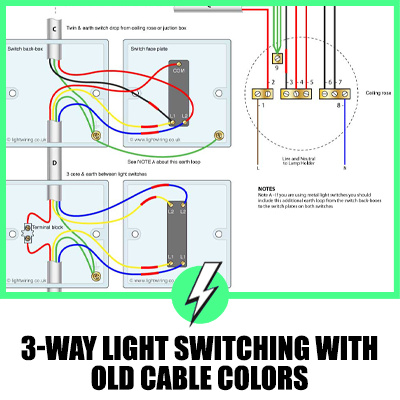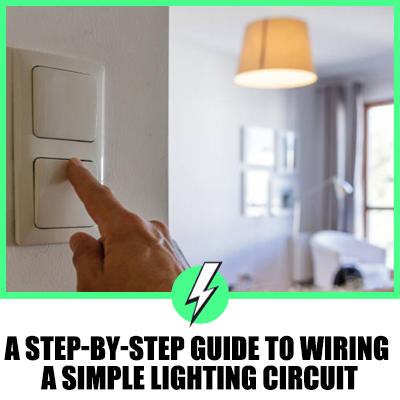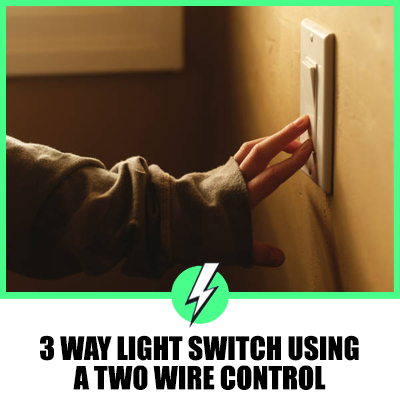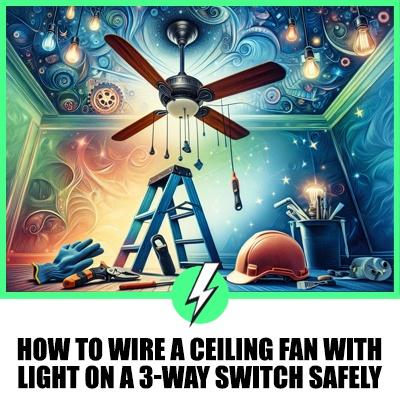A Step-by-Step Guide to Wiring a Ring Main Circuit in the UK
Wondering how to wire a ring main circuit in your UK home?
Ring main circuits are a staple in UK electrical systems, providing an efficient way to distribute power across multiple sockets.
This system not only ensures a balanced load across all connected devices but also minimizes the risk of voltage drops, making it an ideal choice for residential power distribution.
Well, we’ll be going over:
- What are the essential steps to start wiring your ring main circuit from the consumer unit?
- How can you ensure each socket and FCU is correctly incorporated into the ring?
- What safety measures and regulations should you keep in mind to ensure a successful installation?
Embarking on a DIY electrical project might seem daunting, but with the right guidance and precautions, you can lay the groundwork for a safe and efficient ring main circuit.
Let’s dive in.
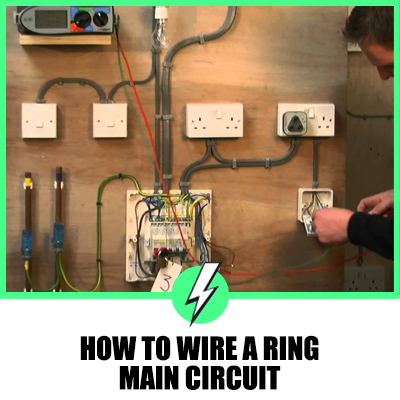
Contents
Understanding the Ring Main Circuit
A ring main circuit consists of a continuous loop of electrical cable that connects various socket outlets in a building.
It starts and ends at the consumer unit (fuse box) and serves as a reliable method for supplying power to multiple sockets, ensuring efficient distribution.
Ring Main wiring

Please observe the wiring diagram above. As you can see the circuit starts and ends at the consumer unit.
It goes around the house (or a room) and connects to all the sockets and Fused Connection Units (FCU`s) required to be on the ring main circuit.
This means that every single accessory will have wires coming to it and wires leaving from it towards the next accessory and eventually terminating the circuit at the consumer unit.
In order to achieve this, all wires (Line, Neutral and Earth) will be doubled up in the terminals of sockets, FCU `s or and in the terminals of the consumer unit.
The images bellow show a socket and an FCU with the circuit going in and out.
Please observe that there are two brown wires (Line), two blue wires (Neutral) and two green/yellow ones (Earth).
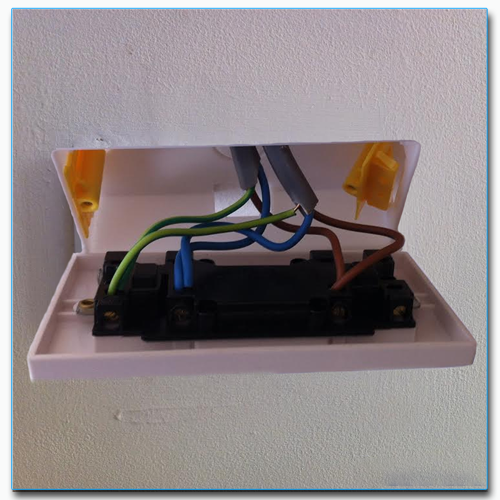
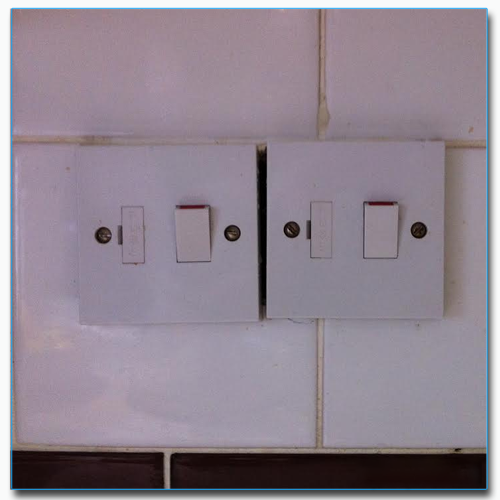
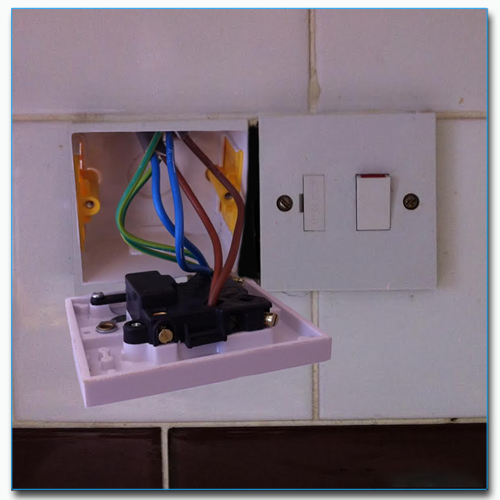
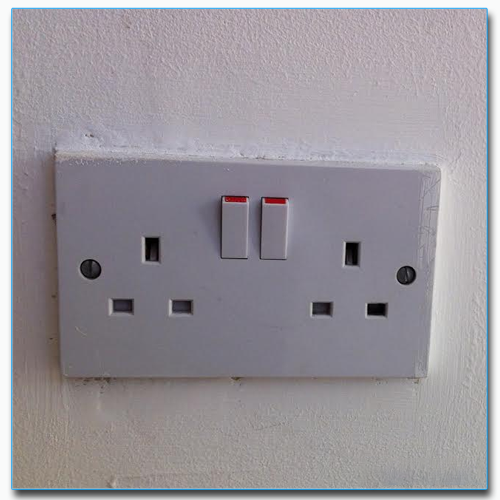
It is the same arrangement in the consumer unit as well.
Since the circuit goes around and ends at its starting point, the protective device (usually an MCB) will have two brown wires in its terminals (as demonstrated in the picture bellow), and the Neutral and Earth bars will also have two wires in their corresponding terminals for the Neutral and Earth wires.
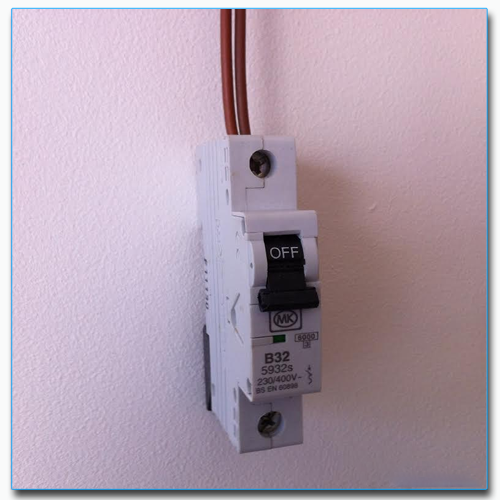
As you can see, wiring a Ring Main is relatively easy.
All you have to do is to start at the consumer unit with a length of appropriate cable, go around your area and “pick up” all your sockets and FCUs and then return to the consumer unit to end the circuit.
Consumer Unit Connections
The consumer unit follows the same principle, with the protective device (typically an MCB) and the Neutral and Earth bars accommodating two wires each for their respective circuits.
Wiring a ring main involves starting at the consumer unit with an appropriate cable, routing through the area to include all sockets and FCUs, and then looping back to the consumer unit to complete the circuit.
Spurs in the Ring Main
In the ring main, a “spur” refers to a socket extended from another without forming part of the ring itself, as it only has one cable connected.
This allows for additional sockets or FCUs to be added to the circuit without needing a direct line back to the consumer unit, simplifying expansions.
A single socket or multiple FCUs (each fused to 13A) can be spurred from any point within the ring main circuit, providing a convenient method to extend the circuit.
Design and Protection of Ring Main Circuits
The ring main’s design, which allows for smaller cable sizes due to the doubled-up supply to each accessory, is particularly suited for domestic settings.
A typical setup uses 2.5 mm² Twin&Earth cable protected by a 32A Type B MCB, sufficient for covering 100 m², making it ideal for household applications.
Homes often feature separate ring mains for different floors for efficiency and safety.
Key Components and Wiring Facts
- Consumer Unit: The consumer unit, also known as the fuse box, is where the ring main circuit starts and ends. It houses the circuit breakers or fuses that protect the circuit from overload or faults.
- Twin and Earth Cable: Twin and earth cable is used for the wiring connections in a ring main circuit. It consists of three individual wires:
- Brown (or red): Live or line wire
- Blue or black: Neutral wire
- Green/Yellow: Earth wire
- Socket Outlets: Socket outlets are the points where electrical appliances are connected. They are wired in a ring configuration, connecting one socket outlet to the next and forming a continuous loop.
Step-by-Step Guide to Wiring a Ring Main Circuit
- Turn Off the Power: Before starting any electrical work, ensure the power is switched off at the consumer unit to prevent any electrical hazards.
- Plan the Circuit: Determine the number and location of socket outlets required for the ring main circuit. Adequate spacing between outlets should be maintained to prevent overloading.
- Install the Socket Outlets: Install the socket outlets at the desired locations, following the manufacturer’s instructions. Ensure proper grounding by connecting the earth wire to the socket’s earth terminal.
- Connect the Live Wires: Start at the consumer unit and run the live wire (brown or red) to the first socket outlet. From there, connect a separate live wire to the next outlet and continue this process until you reach the last outlet.
- Connect the Neutral Wires: Connect the neutral wire (blue or black) from the consumer unit to the first socket outlet. From there, connect a separate neutral wire to the next outlet and continue until you reach the last outlet.
- Connect the Earth Wires: Connect the earth wire (green/yellow) from the consumer unit to the first socket outlet. From there, connect a separate earth wire to the next outlet and continue until you reach the last outlet.
- Test the Circuit: After completing the wiring connections, switch on the power and test each socket outlet to ensure proper functionality and polarity.
Safety Precautions
- Always turn off the power before starting any electrical work.
- Use proper insulation and protection for all wiring connections.
- Ensure correct wire sizing to handle the expected load.
- Follow UK wiring regulations and consult a qualified electrician if needed.
Conclusion
Wiring a ring main circuit is a crucial task when it comes to electrical installations in UK homes.
By understanding the components, wiring facts, and following a step-by-step guide, individuals can confidently wire a ring main circuit, ensuring efficient power distribution to multiple socket outlets.
Safety should always be a priority, and adherence to UK wiring regulations is essential. If in doubt, consult a qualified electrician for assistance.
By following these guidelines, homeowners can create a reliable and efficient electrical system to power their appliances and devices.
